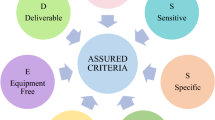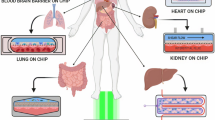Abstract
Cell lysis, where cellular material is released, is the basis for the separation and purification of cell contents, biochemical analysis, and other related experiments. It is also a key step in molecular, real-time, and cancer diagnoses as well as in the drug screening of pathogens. The current methods of lysing cells have several limitations, such as damage to the activity of cellular components, the need for a large number of cell samples, time-consuming processes, and the danger of high voltage. Therefore, a simple, fast, and efficient method for the manipulation of micro-volume cells or for single cell lysis is significant for further scientific research and practical application. In this study, a new low-voltage controllable method for cell lysis was established, and a corresponding microfluidic chip was developed. Simple, efficient and rapid micro-volume cells and single cell lysis were successfully achieved under a low-voltage alternating current with a voltage of 16 Vp-p and frequency of 10 kHz. The lysis process was investigated in detail by separately labelling the whole cell, cytoplasm, and nucleus using fluorescent proteins, which indicated that the whole cell was completely lysed. Analysis of voltage and frequency effects revealed that a higher voltage and optimized frequency enhanced the cell lysis efficiency. The presented study provides a new strategy for the lysis of micro-volume cells or a single cell, which is valuable for on-chip real-time diagnostics and point of care (POC) applications.







Similar content being viewed by others
References
S.K. Ameri, P. Singh, S. Sonkusale, Biosens. Bioelectron. 61, 625–630 (2014)
R.B. Brown, J. Audet, J. R. Soc. Interface 5(Suppl 2), S131–S138 (2008)
J. Gao, X.F. Yin, Z.L. Fang, Lab Chip 4(1), 47–52 (2004)
J. Graham, D. Rickwood, Subcellular Fractionation: A Practical Approach (Oxford University Press, New York, 1997)
T. Grahl, H. Märkl, Appl. Microbiol. Biotechnol. 45(1), 148–157 (1996)
M. Hamon, J.W. Hong, Mol Cells 36(6), 485–506 (2013)
A.D. Hargis, J.P. Alarie, J.M. Ramsey, Electrophoresis 32(22), 3172–3179 (2011)
M.-S. Hung, Y.-T. Chang, BioChip J 6(1), 84–90 (2012)
K. Kinosita, T.T. Tsong, Proc. Natl. Acad. Sci. 74(5), 1923 (1977)
G. Mernier, N. Piacentini, T. Braschler, N. Demierre, P. Renaud, Lab Chip 10(16), 2077–2082 (2010)
M.J. Mescher, E. Swan, J. Fiering, M.E. Holmboe, W.F. Sewell, S.G. Kujawa, M.J. McKenna, J.T. Borenstein, J. Microelectromech. S. 18(3), 501–510 (2009)
S. Metz, R. Holzer, P. Renaud, Lab Chip 1(1), 29–34 (2001)
M.S. Munson, P. Yager, Anal. Chim. Acta 507(1), 63–71 (2004)
L. Nan, Z. Jiang, X. Wei, Lab Chip 14(6), 1060–1073 (2014)
M. Poudineh, R.M. Mohamadi, A. Sage, L. Mahmoudian, E.H. Sargent, S.O. Kelley, Lab Chip 14(10), 1785–1790 (2014)
A.J. Sale, W.A. Hamilton, Biochim. Biophys. Acta 163(1), 37–43 (1968)
A. Salehi-Reyhani, F. Gesellchen, D. Mampallil, R. Wilson, J. Reboud, O. Ces, K.R. Willison, J.M. Cooper, D.R. Klug, Anal. Chem. 87(4), 2161–2169 (2015)
J.M. Walker, The Protein Protocols Handbook (Springer-Verlag New York, LLC, New York, 2009)
W. Wan, J.T.W. Yeow, Biomed. Microdevices 13(3), 527–532 (2011)
W. Wan, J.T.W. Yeow, Biomed. Microdevices 14(2), 337–346 (2012)
F. Yang, C. Kuang, W. Zhao, G. Wang, Chem. Eng. Commun. 204(2), 190–197 (2017a)
F. Yang, X. Liao, Y. Tian, G. Li, Biotechnol J (2017b)
Acknowledgements
We appreciate Prof. Yue Wang from State Key Laboratory of Supramolecular Structure and Materials for insightful discussions. This work was supported by the NSF of China No. 21705055 and Jilin Provincial Youth Foundation 20170520036JH, China Postdoctoral Science Foundation 2017 M610196, Jilin University young teachers and students interdisciplinary program, respectively. Help from Dr. Ying Zhang for providing the cell lines is appreciated. We also appreciate the help from Ziyu Liu and Hongli Huang in the cell staining and silver staining.
Author information
Authors and Affiliations
Corresponding author
Ethics declarations
Conflict of interest
The authors declare no financial or commercial conflict of interest.
Additional information
Publisher’s note
Springer Nature remains neutral with regard to jurisdictional claims in published maps and institutional affiliations.
Rights and permissions
About this article
Cite this article
Wei, Xy., Li, Jh., Wang, L. et al. Low-voltage electrical cell lysis using a microfluidic device. Biomed Microdevices 21, 22 (2019). https://doi.org/10.1007/s10544-019-0369-x
Published:
DOI: https://doi.org/10.1007/s10544-019-0369-x




